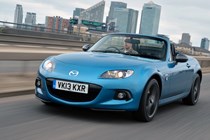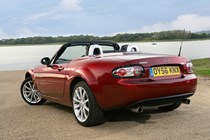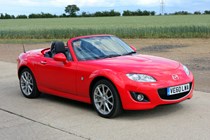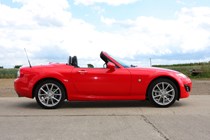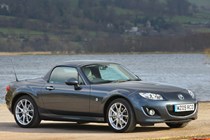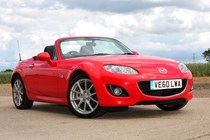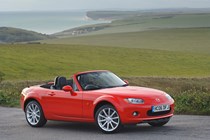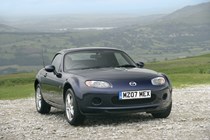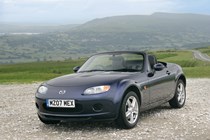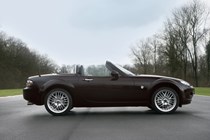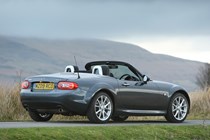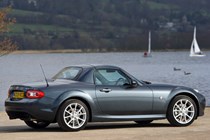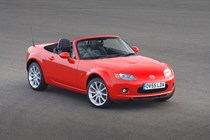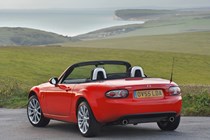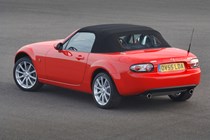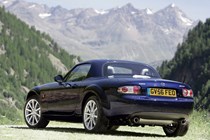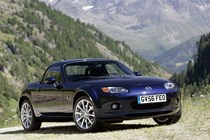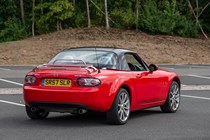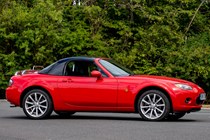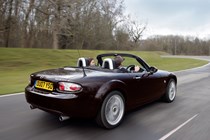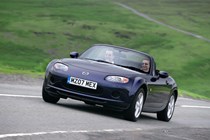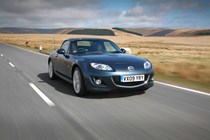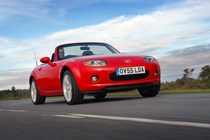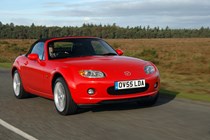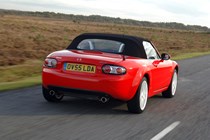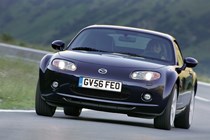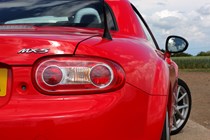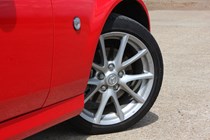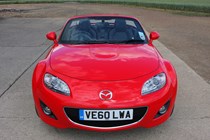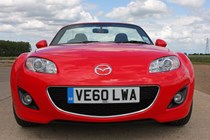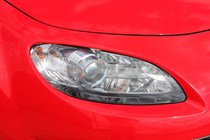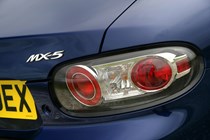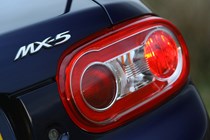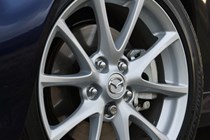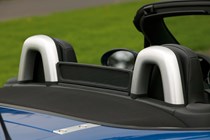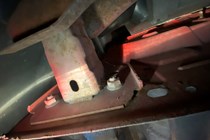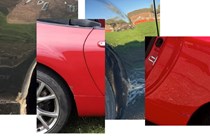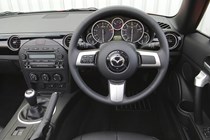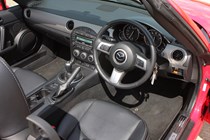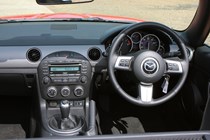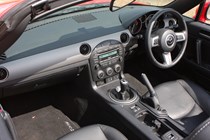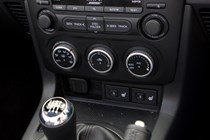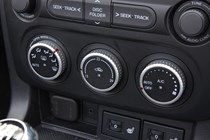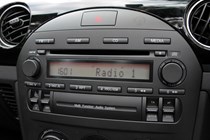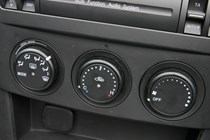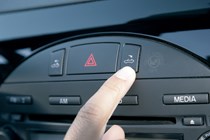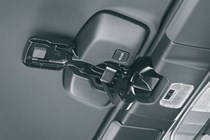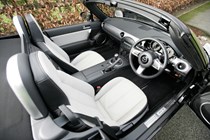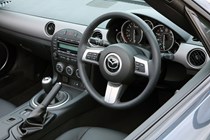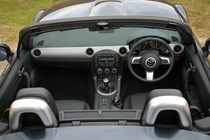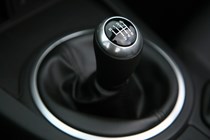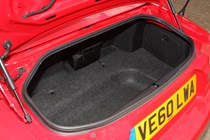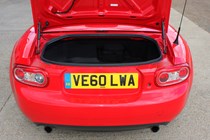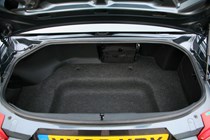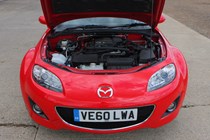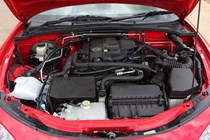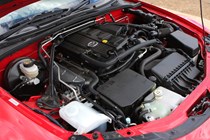
Mazda MX-5 Convertible (2005-2015) engines, drive and performance
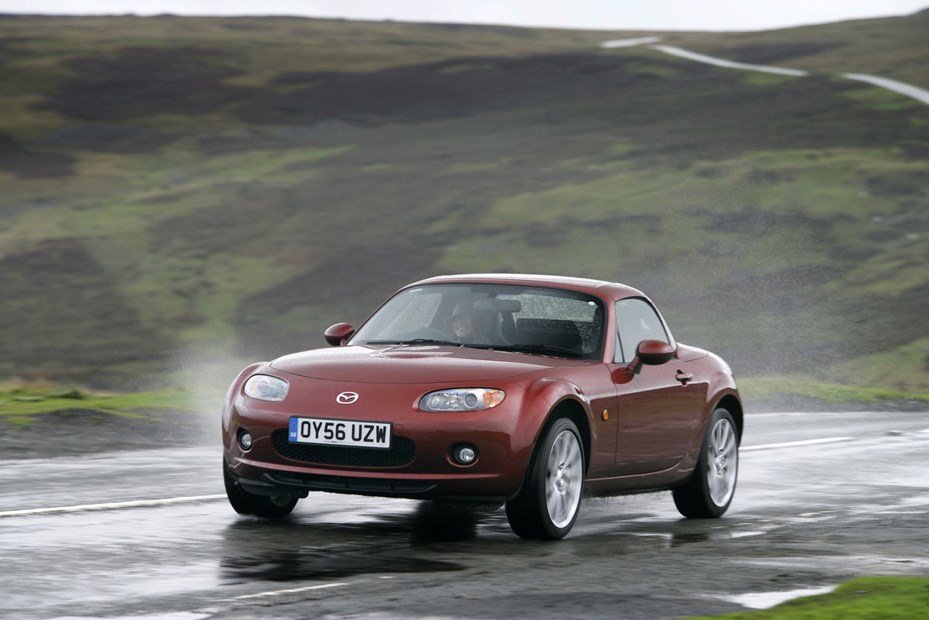
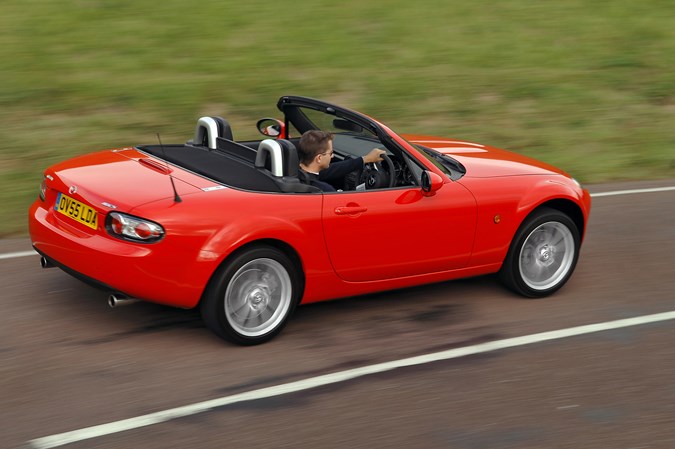
- New 1.8 and 2.0-litre options for the MX-5 Mk3 (NC)
- Engines are less robust, easier to maintain
- Oil level and servicing is critical
When Mazda launched the Mk3 MX-5, the engine range was completely revamped. In place of the BP twin-cam engines, the ‘MZR’ L-series engine in 1.8-litre and 2.0-litre form powers the NC generation.
Ranging from 126hp to 160hp, neither is outrageously quick from the factory, keeping the free-revving and agile feel of the original MX-5; you do have to work them quite hard to get meaningful performance.
As the engines get older some weaknesses have been revealed. These appear to affect pre-2009 cars more than later ones.
Mazda 2.0 MZR emissions failure and oil consumption
Looking at forums and user groups, the biggest mechanical weakness of the Mk3 MX-5 is the 2.0-litre engine, which doesn’t tolerate incorrect oil levels well and if neglected, lets you know by failing the MOT on emissions.
Before starting the engine of a potential purchase, check the oil level. Mazda issued two styles of dipstick; later cars have a flat blade with two holes for min/max that is easier to read, and is inexpensive to buy.
Look for blue smoke from the exhaust on startup and when warm.
The oil pressure gauge is not accurate on the MX-5 Mk3. Although it moves in a natural way, it’s entirely fake; the oil pressure warning is a traditional switch, and the gauge is controlled by engine temperature and revs – in a change from previous MX-5s which artificially showed a constant oil pressure.
Most issues are the result of low oil, though age also factors. The piston rings can gum up, and the liners on the aluminium engine can wear. The upshot is a bill around £1,000 to £1,400 for a rebuild from a reputable specialist. Liners can also wear in an oval shape on higher-mileage cars.
The 1.8-litre engine suffers similar problems, but has often been worked harder so they show up earlier.
Mazda introduced a digital service record with the third generation MX-5, you should have printouts in the car’s history or can look it up via the My Mazda app on iOS or Android.
Tuning and upgrades for the MX-5 Mk3 (NC)
There are many tuning and handling upgrades for the Mk3, particularly as the cars get cheaper and more appealing for low-cost track days and racing. Some are particularly significant however, being bespoke to the NC.
2.5-litre engine upgrade
For around £3,500 you can replace the standard engine with a 2.5-litre setup. This gives a small power boost to around 180hp, significant improvements in torque (and economy if you change the gearing) and a much tougher engine overall with a cast-iron block capable of handling more upgrades.
BBR Super 200/225
For a big performance boost without changing the core of the MX-5, BBR’s Super 225 upgrade for less than £5,000 fitted is a complete package of traditional tuning options, tailored to the NC. Throttle bodies, new ECU map, new exhaust and a 67hp upgrade give the MX-5 performance to match its looks, though you’ll want to make sure the engine block is in top health before spending that much.
The Super 200 offers a similar, simpler turnkey experience for just over 200hp, at a lower cost – under £2,200 fitted, ex. VAT.
BBR Sports Suspension
A lot of owners choose to add cheap coilover kits for a sporty feel, but these are not always the best option for road use. Costing little more than replacing the springs and dampers with factory items – on a car up to 15 years old, a perfectly reasonable wear and tear item – BBR’s tuned Koni dampers and progressive-wound lowering springs are fitted alongside a full four-wheel alignment for less than £1,000.
MX-5 handling and performance
- More refined car feels slower, but still immense fun
- Six-speed 2.0-litre Sport is the one to get
- Automatic option on later models
The 2.0-litre sprints from 0-62mph in 7.9 seconds compared to 9.4 seconds for the 1.8-litre. The folding hard top on Roadster Coupe models adds 37kg of extra weight but this doesn’t affect performance. The 1.8-litre is only available with a five-speed gearbox whereas the 2.0-litre engine comes with a five-speed or a six-speed ‘box on the Sport model. Both transmissions are a delight to use thanks to a slick and positive action.
In 2011 a six-speed automatic gearbox was added, only available with the 2.0-litre engine. It means a sprint from 0-62mph in 8.9 seconds.
Road-testing an MX-5 Mk3
It’s a simple car, and simple tests suffice. Clutch and steering should be light, predictable and progressive, and the brakes responsive from initial pressure. Feel for wandering and if it’s not the road surface, check the front tyres for uneven wear after your test drive.
The engine revs easily, but there’s a lot of throttle travel. Find a loose surface and let the rear wheels spin when pulling away; you should see the traction light flash on the dashboard.
Noise levels can be quite high; put the roof and windows down to listen for engine noises below 30mph, ideally near walls or other buildings that echo them back to you.
Put the roof up on soft-top models and listen to the road noise. If it’s particularly loud and behind you it could be a rear wheel bearing, worn tyres or another problem; worn tyres will generally be constant, wheel bearings will change with cornering. If there’s excess road noise the drain tubes may need looking at, but some tyres can make a sound a lot like a failed wheel bearing that is less obvious with the roof down.
MX-5 vs contemporary rivals
Mazda engineers have benchmarked the MX-5 against cars like the Porsche Boxster and this is evident on the move. It’s agile, nimble and great fun – helped further by the fact the MX-5 is rear-wheel drive.
The new body is stiffer than before and this means that even with the roof down there’s no wobble or vibration. It’s composed on poor surfaces and makes a surprisingly good motorway cruiser. Some may argue that it’s not as much fun as its predecessors but there’s no denying it is hugely enjoyable and rewarding to drive.


